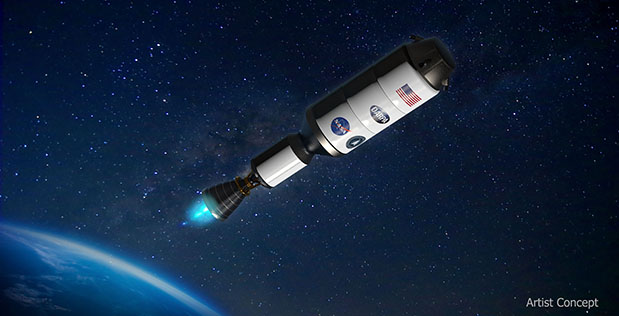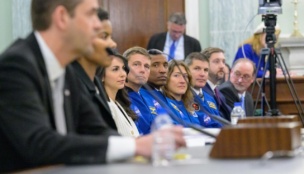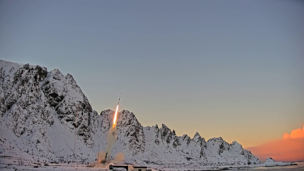After a 50-year hiatus, the US is planning to test a nuclear fission-powered thermal propulsion system on a spacecraft.
NASA said this week that it would team up with DARPA, the Pentagon’s R&D arm, to build, launch, and demonstrate a nuclear thermal engine. This early work is intended to pave the way for a crewed mission to Mars in the late 2030s. The joint project has a $110M budget this year and will likely cost hundreds of millions more through deployment, planned for 2027.
The significance: NASA and DARPA are focused on speeding up the voyage to Mars and other deep space destinations. “If we have swifter trips for humans, they are safer trips,” NASA Deputy Administrator Pam Melroy said Tuesday.
The power of nuclear
There’s a reason the US hasn’t launched a nuclear spacecraft in more than five decades. Since signing the Outer Space Treaty in 1967—and thus agreeing not to place WMDs in orbit—nuclear thermal propulsion has been a gray area.
Still, the idea that nuclear engines pair best with crewed deep space missions has gained steam in recent years.
- Nuclear thermal propulsion is expected to produce far more thrust than chemical systems, speeding up long-duration journeys.
- A shorter trip = less exposure to radiation and fewer supplies needed.
- Nuclear engines are also thought to be more efficient than chemical ones.
Across the federal government, multiple agencies are pitching in to develop nuclear systems that would power and propel spacecraft in the coming decades. Lawmakers have also encouraged NASA to pursue nuclear propulsion, setting aside higher levels of funding than the agency requested for related R&D.
“While it is easy to maintain skepticism regarding near-term timelines for projects hoping to place nuclear material in space, the level of funding behind these civilian and military government programs provides reason to be optimistic,” wrote Ian Vorbach in a recent edition of SpaceDotBiz.
“Given that existing propulsion and power systems offer little realistic path for a sustained economy beyond the Moon, there seems to be an inevitability around the need for nuclear in space.”
The collaboration
This agreement brings NASA into DARPA’s existing DRACO program. DRACO—short for Demonstration Rocket for Agile Cislunar Operations—currently consists of two tracks:
- Track A to develop the nuclear fission reactor, and
- Track B to design the spacecraft system and mission.
In 2021, DARPA awarded three DRACO contracts. $22M went to General Atomics in Track A, with $2.9M and $2.5M in Track B grants awarded to Lockheed Martin and Blue Origin, respectively.
Enter NASA
Through this partnership, the space agency will provide R&D support to the existing DRACO program. NASA will develop the nuclear engine, with DARPA integrating the system into a spacecraft and managing launch ops.
The mission itself is expected to demonstrate the efficacy of the nuclear engine, including its maneuverability. It will remain in Earth orbit, somewhere between 700 and 2,000 km above the Earth’s surface.
What’s next? Tabitha Dodson, DRACO program manager, told Reuters that the agencies are tentatively expecting to pick a spacecraft manufacturer by March. That contractor will be tasked with building the craft ahead of a 2027 demo.




